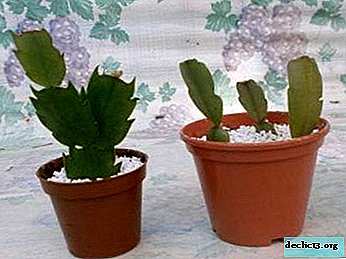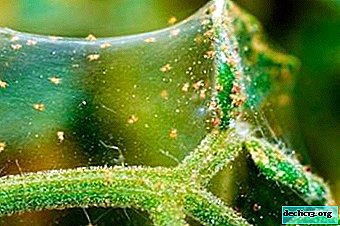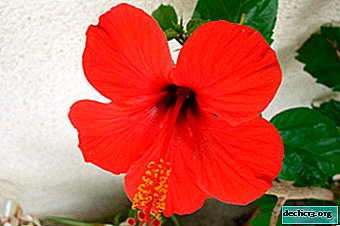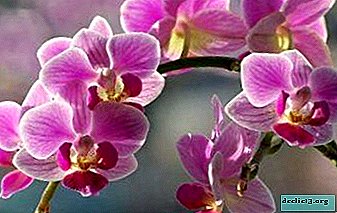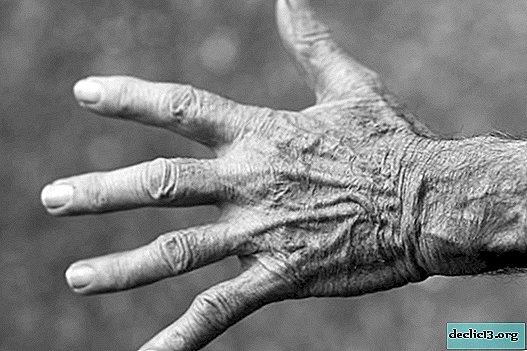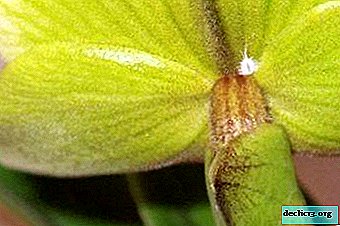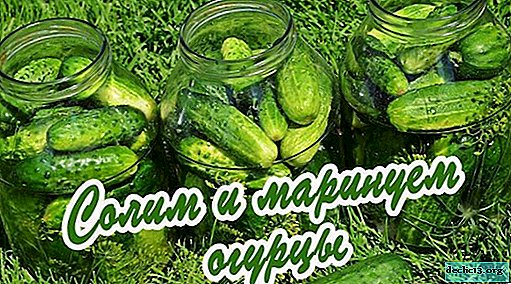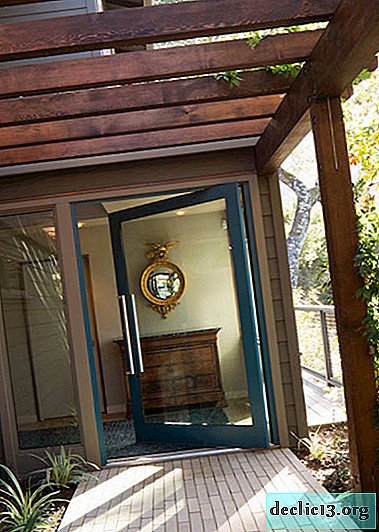Scented geranium: home care and plant photos
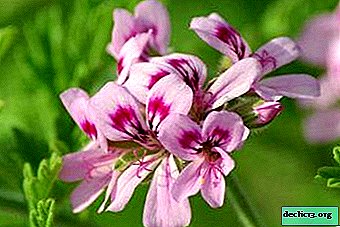
Fragrant geranium, which is also called pelargonium (or, in Latin - "Pelargonium graveolens" - fragrant pelargonium) - a plant loved by flower growers because of its unpretentiousness, the beauty of the leaves and the healing properties that clean the air.
Home care for such geraniums is simple, but has some nuances. Next, we consider what conditions she needs, reproduction and transplantation rules, as well as problems that the grower may encounter.
What is this plant?
A fragrant perennial from the geranium family came from South Africa. The branched bush has a developed nodular rhizome and strong straight stems.
Unlike the geranium that everyone is used to seeing "on the grandmother's windowsills," Pelargonium graveolens flowers are inconspicuous and small, but the leaves are very decorative: palmate-lobed, covered with small villi.
At the lightest touch on the leaf, geranium exudes a strong, unlike anything else aroma, thanks to the phytoncides useful to humans.
REFERENCE. Hybrid varieties can produce atypical geranium flavors: lemon, apple, nutmeg, peppermint, and even mint and pine needles.You can read more about fragrant geranium here, and learn about the use of the plant in folk medicine and about beneficial properties in this material.
Photo
Check out the geranium photo below:




The necessary conditions
- Air. For fragrant geraniums, the most comfortable temperature will be moderate, closer to cool: in spring and summer it is 18-23 ° C, in winter - 15-18 ° C.
Pelargonium graveolens needs fresh air, so you need to ventilate the room with this plant every day, and with the onset of stable warm weather it is recommended to take the pot with the pelargonium bush to the balcony for the whole summer.
- Shine. Geranium loves direct sunlight, it will not die in the shade, but it will not grow well and, especially, will not bloom. In an apartment, it would be better to place the plant near a window facing the west or east side, where the sun's rays are present for at least half a day.
- Humidity. Fragrant pelargonium has the ability to accumulate water in its stem and leaf blades. Thanks to this, the plant does not need spraying and does not like excessive soil moisture.
- The soil. Fragrant geranium grows best in soil rich in minerals. You can buy a ready-made composition in a flower shop, or you can cook it yourself from sand, turf and sheet earth in a ratio of 1: 1: 3.
In the latter case, the land must be disinfected. Peat in the composition should not be! The earth in the pot must be loosened periodically so that oxygen enters the root system.
IMPORTANT! The pot should be small, because in a too spacious pot the plant will not receive the substances necessary for growth. Mandatory drainage of small stones.
Planting and reproduction
Fragrant geranium can be easily propagated with cuttings throughout the year, but the most favorable periods are from February to March and from July to August.
- From the upper part of the plant, they cut out a stalk 7-8 cm long. The lower leaves from the stalk are removed and put it in water to give roots.
- Another method is for more experienced gardeners: planting for rooting directly in the ground, for this, the stalk is kept in the air until the wound dries, and then planted in moist soil, covered with a cap for 7 days. After the sprout is well rooted, it is slightly nipped to stimulate branching.
It is theoretically possible to plant Pelargonium graveolens from seeds, but, according to amateur gardeners, this is a very troublesome and in most cases unsuccessful.
Young plants need to be replanted annually, and adults - only in case of emergency. The best time to transplant is in the spring months. The procedure is simple: first, the bush is cut off, removing excess branches and leaves from it, and then transplanted into a prepared pot with a layer of drainage at the bottom and an earthen mixture.
How to care?
Watering and feeding
 Pelargonium should be watered very moderately: it will easily tolerate a slight drought, but is very sensitive to an excess of water: the root system dies from overflow, leaves fade. The best thing is to water the plant after drying the top soil layer 2-3 cm in depth. Water must be taken up after 30 minutes. after watering, drain its surplus from the pan.
Pelargonium should be watered very moderately: it will easily tolerate a slight drought, but is very sensitive to an excess of water: the root system dies from overflow, leaves fade. The best thing is to water the plant after drying the top soil layer 2-3 cm in depth. Water must be taken up after 30 minutes. after watering, drain its surplus from the pan.
Fragrant geranium can be fed with any universal fertilizer, but it should be remembered that “Overfeeding” with nitrogen will weaken the aroma of the leaves, even if the plant grows well.
Note! In the period from spring to autumn, top dressing is performed once every 3 weeks, and in winter they give rest from top dressing.Fadeless odorous
Non-blooming odorous care geraniums (watering, top dressing, pruning, etc.) are completely similar to the previously considered care for fragrant geraniums.
Pruning
The bush of fragrant pelargonium is able to grow to 1-1.5 m, while if not cut, the plant will turn into an ugly tree-like vine. Therefore, from the first weeks of bush growth and then every year in spring (best in March), the plant is nipped with the removal of growth points and its pruning.
Possible problems
Pests and diseases
A fragrant plant can be damaged by whiteflies, aphids, sometimes it is affected by rust. Most often, pests settle on young plants, affecting their leaves and shoots.
Special drugs (actellic, celtan, etc.) will help get rid of pests. To prevent rust, water stagnation and frequent watering should be avoided.
Conclusion
In order for fragrant geranium to please the owner of the carved graceful leaves all year round care should be taken to ensure that the plant receives enough light and cool air, avoid excessive moisture and cut the bush in time.
Knowing these and other subtleties of home care, discussed in the article, will allow Pelargonium graveolens to maintain a decorative look for many years.


